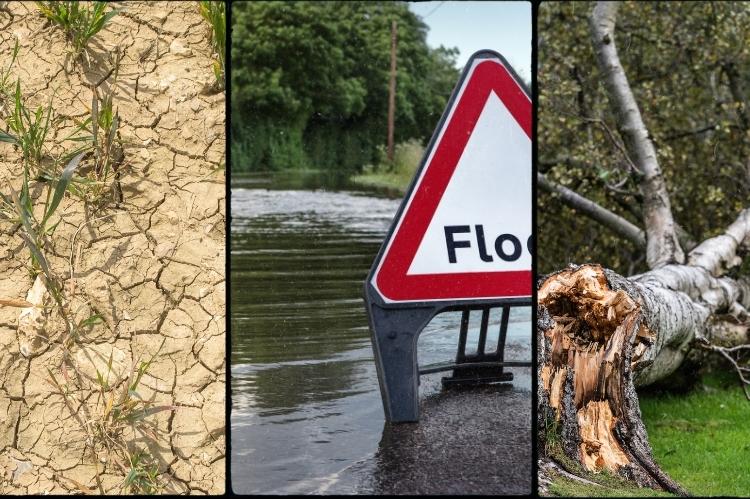Getting the farm ‘climate ready’
17 March 2022Farmers and land managers are constantly making business decisions whilst having to factor in and account for various unknowns; fluctuating commodity prices, market trends, changing regulations and new schemes are all familiar territory. A changing climate brings another dimension to these decisions.
Our weather has now become news. Headlines inform us when we have had our wettest, coldest or hottest day since records began. The recently published Committee on Climate Change Report notes that the average temperature in Scotland has risen by 0.5⁰C, Scottish winters have become wetter (by around 5% – with considerable year-to-year variability) and the sea level around our coastline has been rising by 10 – 30 mm per decade, when compared to just 30 years ago. The trend towards drier summers and wetter winters, alongside more storminess, extreme and sometimes localised weather events, is predicted to continue.
The perceived impacts of climate change could be deemed to be too uncertain or long term by some; however it could pay to identify and take steps to reduce business vulnerability now, helping to minimise issues in the future.
The first step would be to identify the risks to your business posed by extreme or prolonged weather events, and what the potential impacts could be. This could help you minimise risk and disruption, prioritise actions and increase business resilience. There are a series of quick and easy checklists you can review in the Climate Change Adaptation For Agriculture – Is your farm ready? booklet, along with some practical pointers.
Many farmers and land managers are already building resilience into their system and increasing the diversity across the business to spread risk. From changing crop and grass varieties to increasing livestock housing and improving ventilation, measures are being put in place which are partly driven by changing weather patterns. More farmers are interested in and indeed adopting soil regenerative agriculture techniques; actions to improve soil health can support crop and grass growth during weather extremes, protecting yields.
Although not suitable for all, additional planting, such as reinstating hedges or creating shelter belts could also help farms adapt in a changing climate. In the right place, hedges and shelterbelts could provide numerous benefits, including shelter and shade for livestock to reduce heat stress, supporting both livestock welfare and productivity. Shelterbelts can also reduce soil erosion by slowing wind or water action, help to reduce flooding risk and provide a range of food, shelter and habitats for beneficial insects and increase connectivity across the farm, supporting biodiversity as well as the farm business.
Shortage of water isn’t a problem traditionally associated with Scotland, but water scarcity due to reduced winter rainfall and lack of subsequent recharging of groundwater reserves is going to be something we experience more often. In some areas of Scotland, we are seeing burns on the farm that have rarely, if ever, stopped flowing starting run dry during the summer months.
Many of us wouldn’t recognise weather-driven changes to routine business as formal climate change adaptation measures; for some it’s just ‘working with the weather’ as farmers have done for generations. With our weather taking a more unpredictable turn, time spent looking ahead now could pay dividends in the future.
Useful links:
- FAS – see our Adapting to climate change & Regenerative Agriculture pages
- Adaptation Scotland
- Farming for a Better Climate hosts the SAC Consulting booklet Climate Change Adaptation For Agriculture – Is your farm ready? which includes handy checklists
- SEPA Water Scarcity pages containing guidance for abstractors
- Is Scotland climate ready? Climate Change Committee Report to Scottish Parliament (March 2022)
Sign up to the FAS newsletter
Receive updates on news, events and publications from Scotland’s Farm Advisory Service

